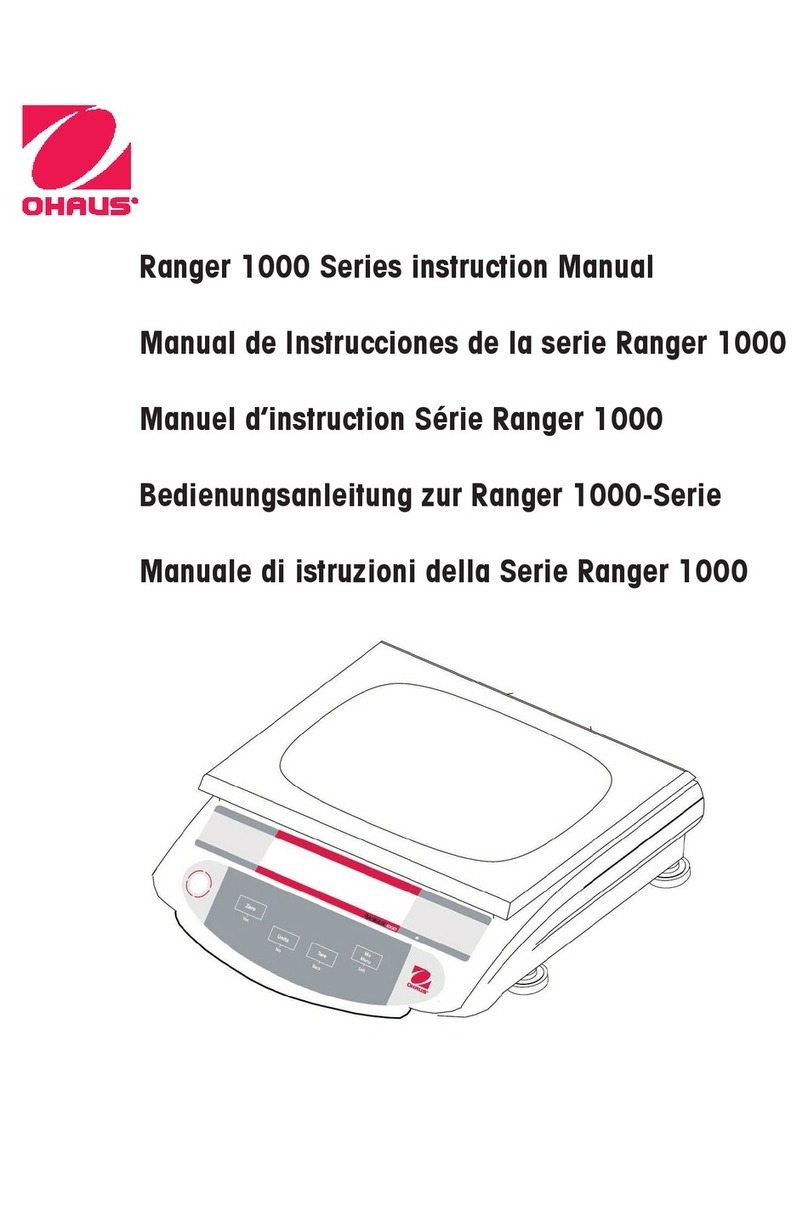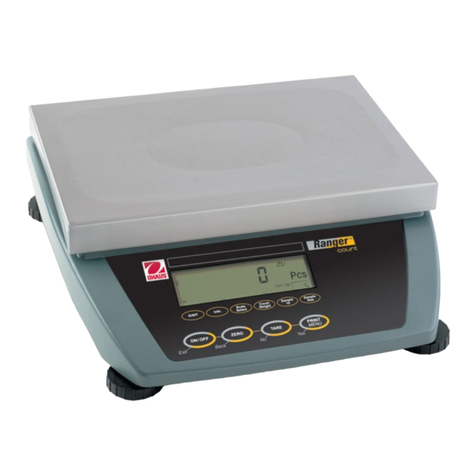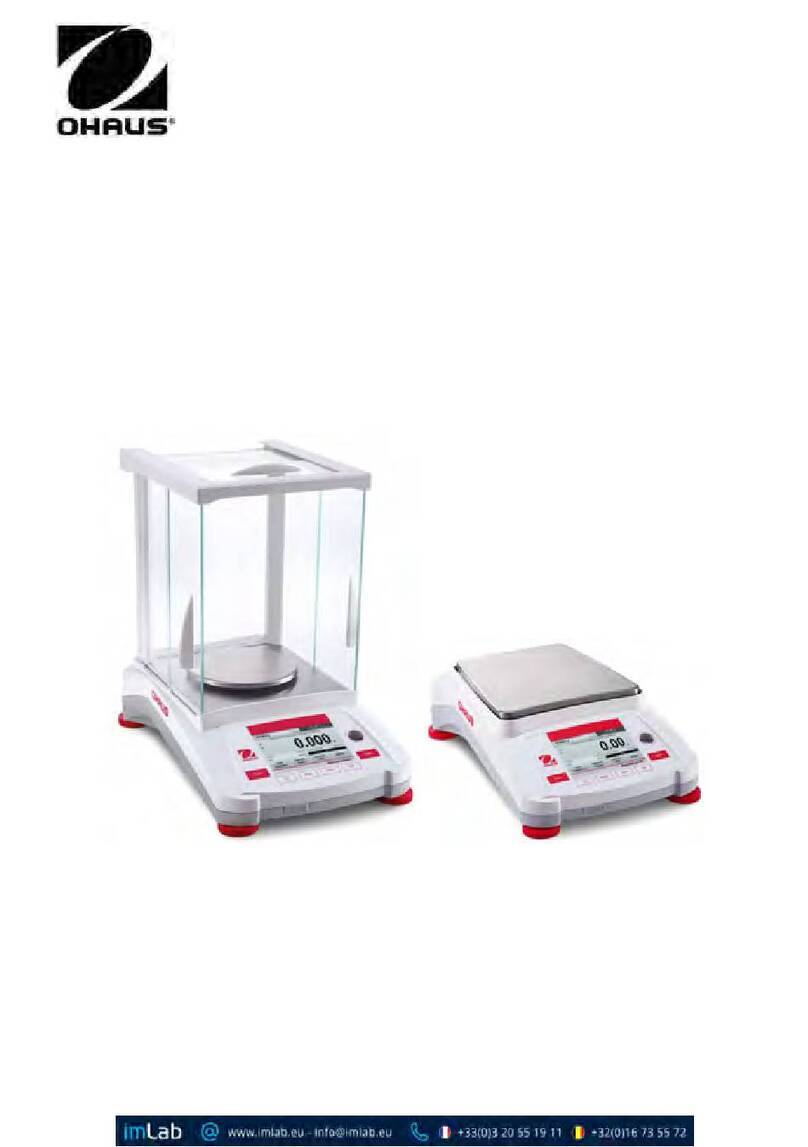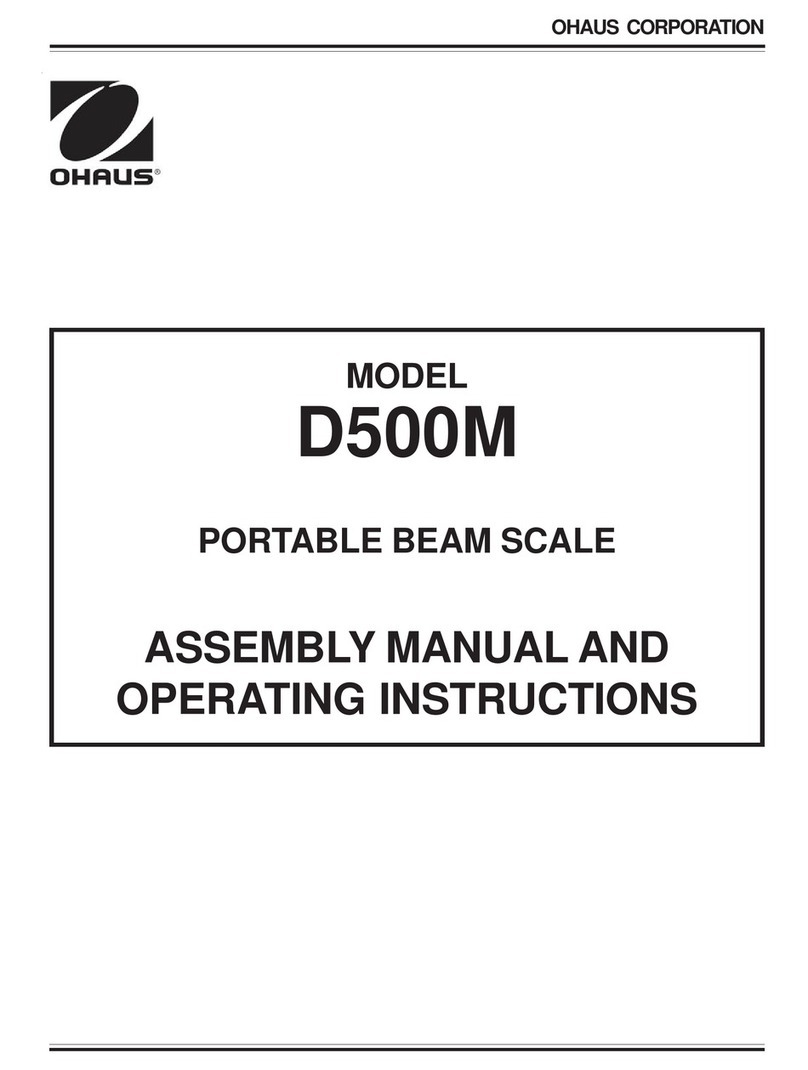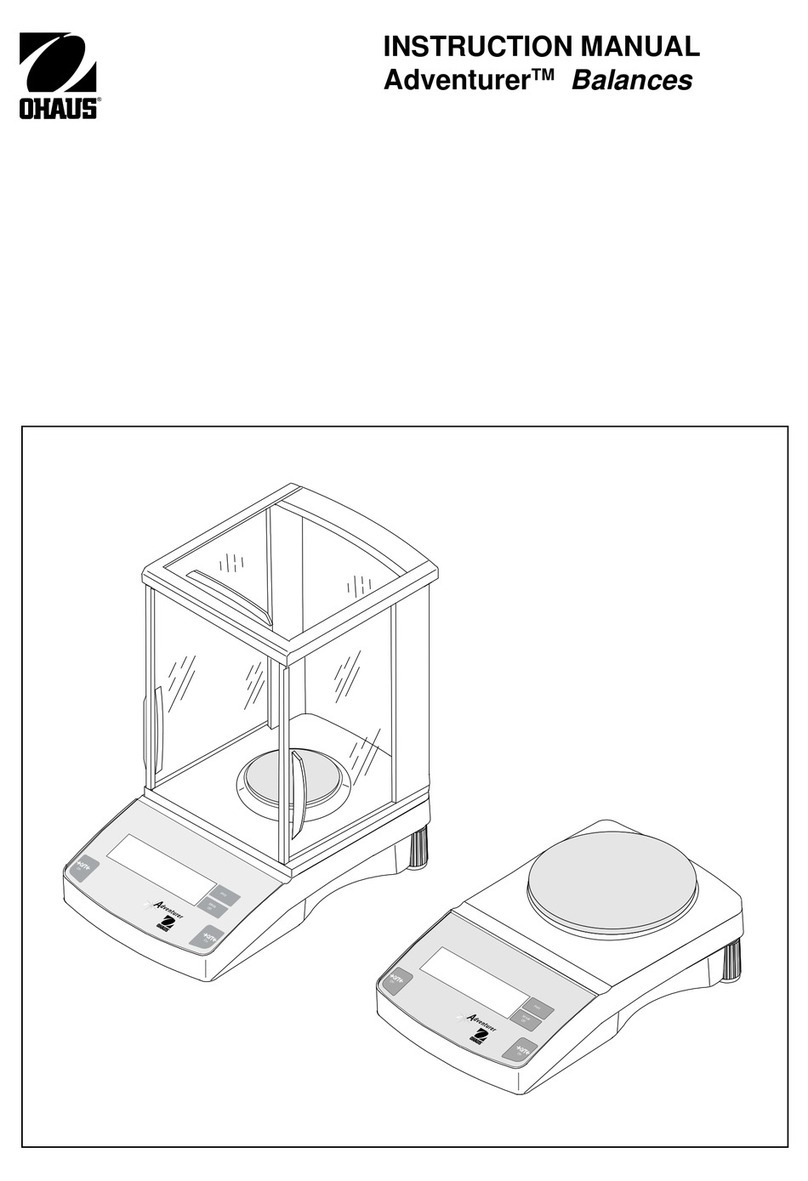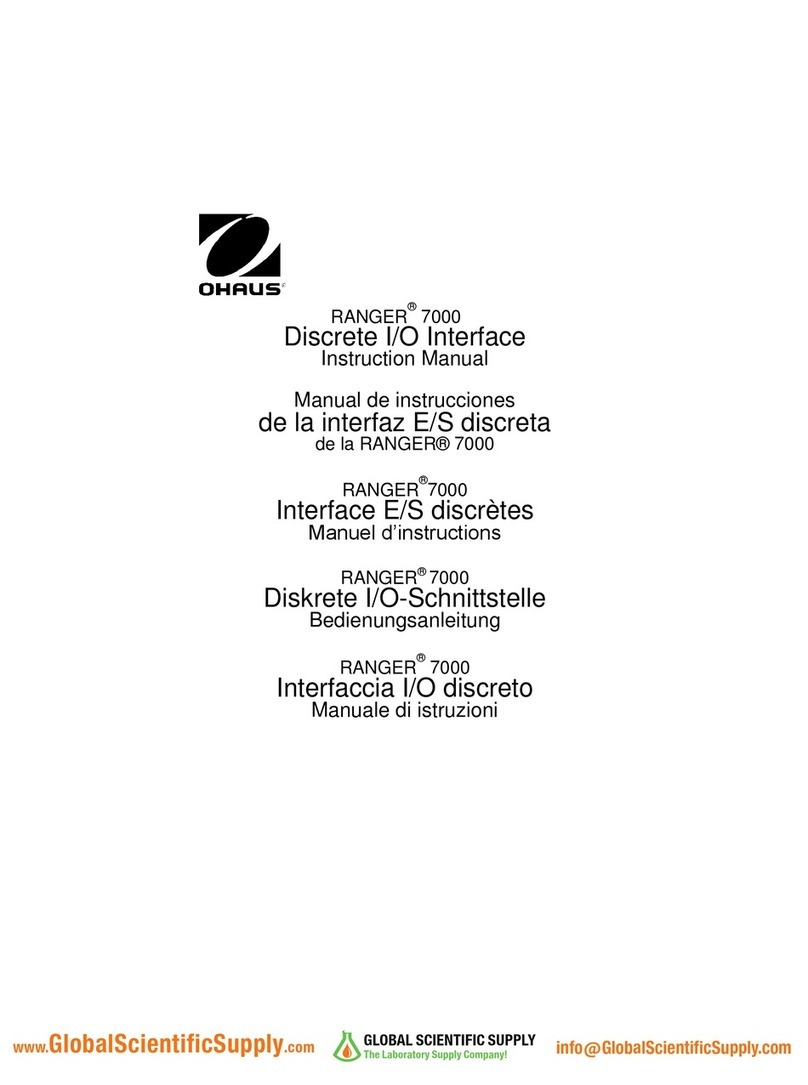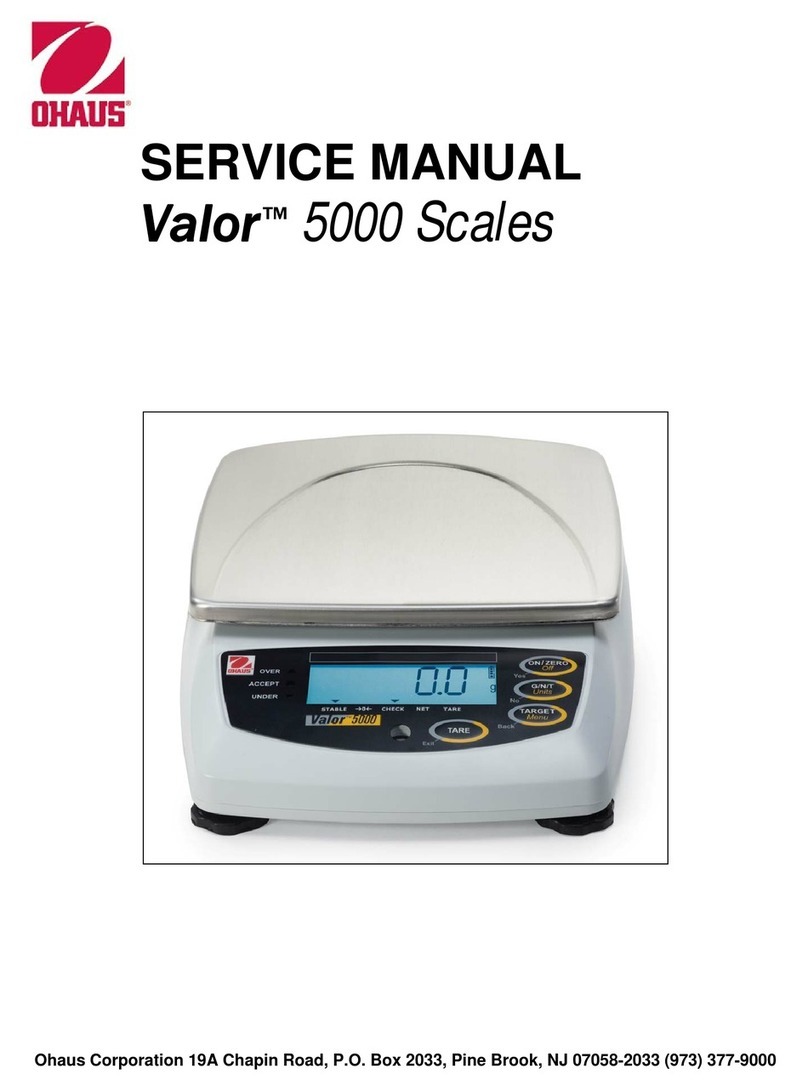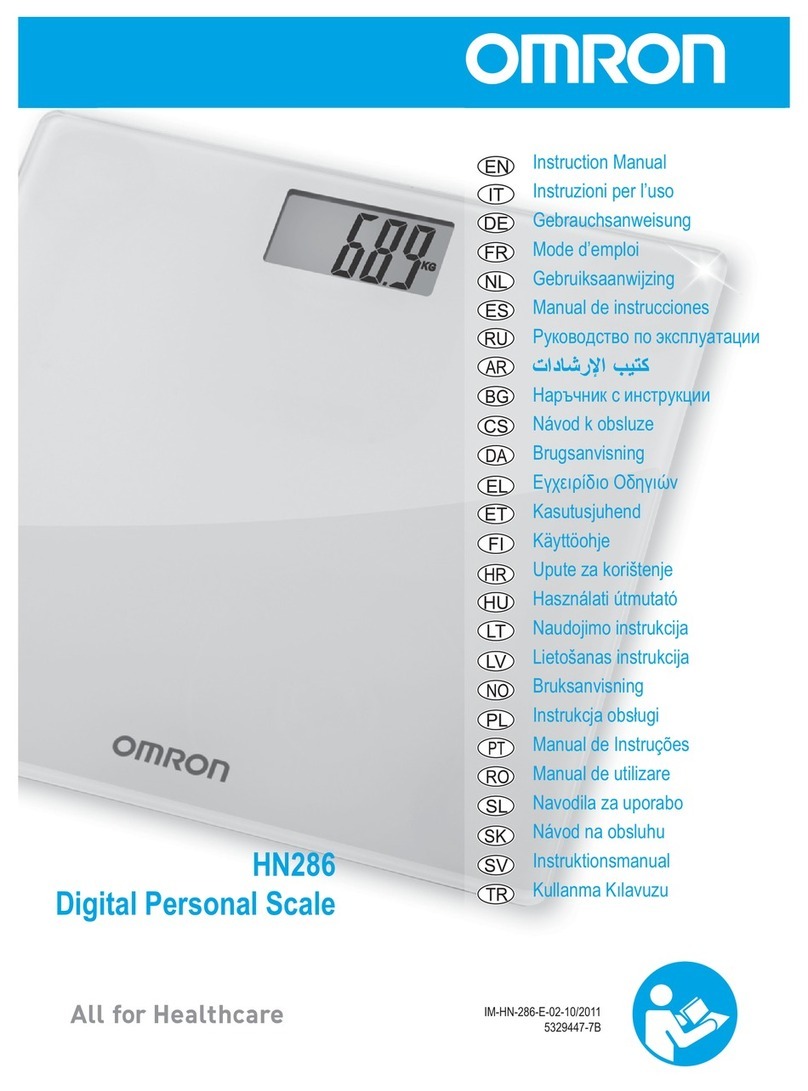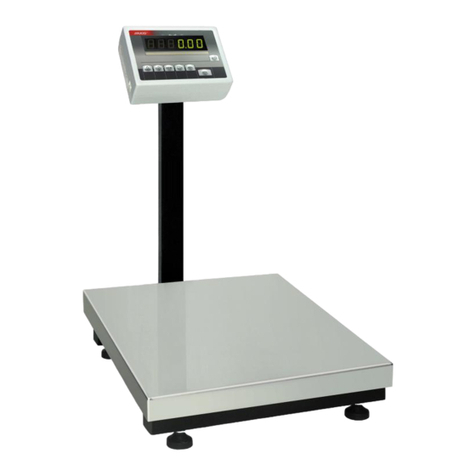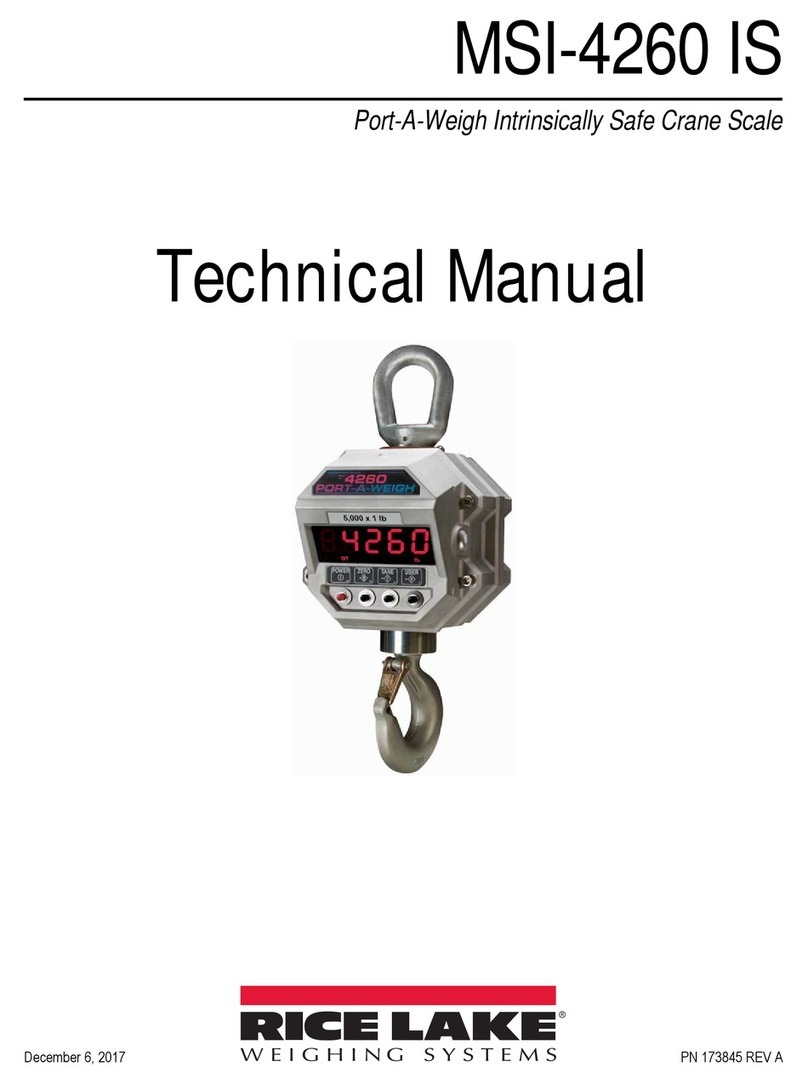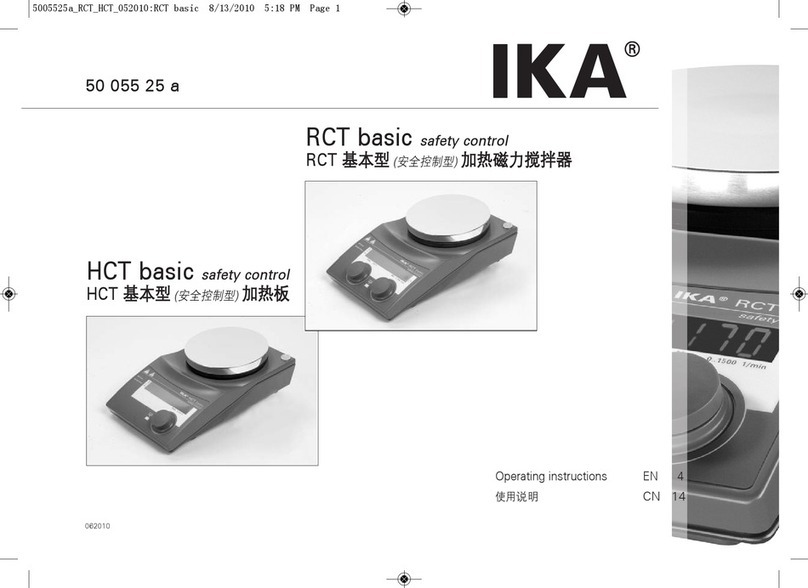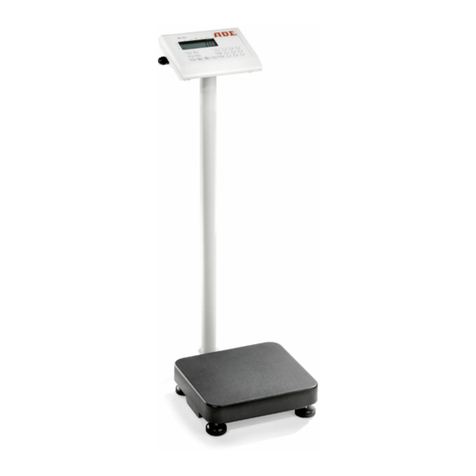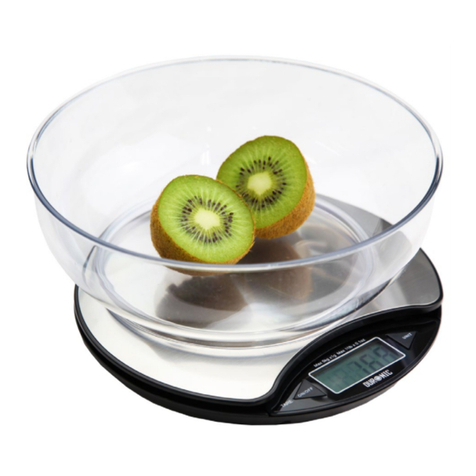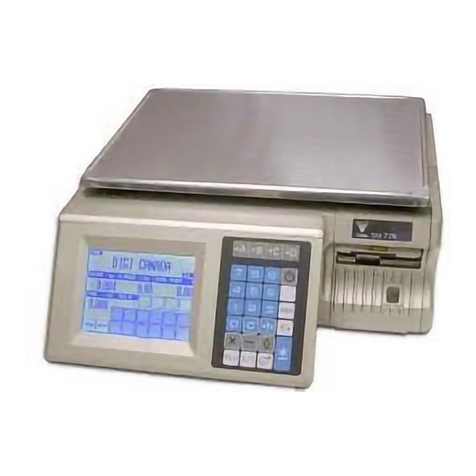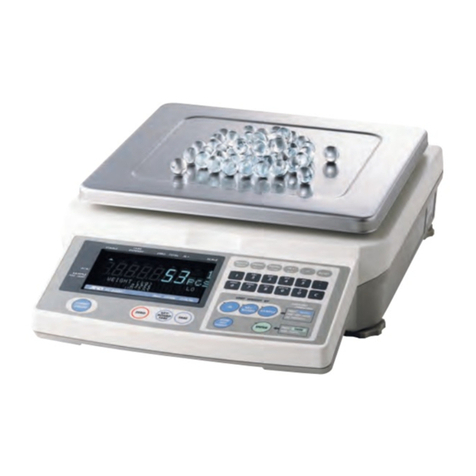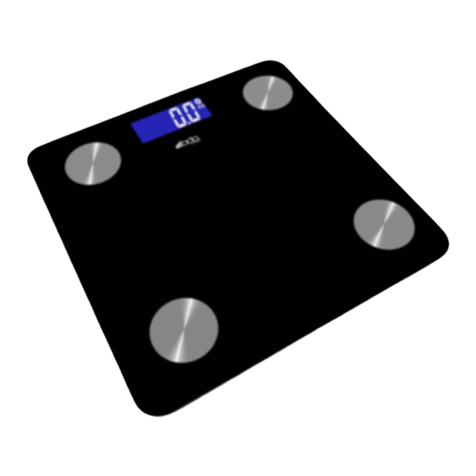TABLE OF CONTENTS
Ohaus Corporation www.ohaus.com i Valor™7000 Series Service Manual
Page No.
CHAPTER 1 GETTING STARTED
1.1 Introduction ..............................................................................................................1-1
1.2 Service Facilities ......................................................................................................1-1
1.3 Tools and Test Equipment Required ........................................................................1-1
1.4 Specifications...........................................................................................................1-2
1.5 Scale Operation Valor 7000 .....................................................................................1-3
1.5.1 Overview of the Controls...................................................................................1-3
1.5.2 Power On/Off ....................................................................................................1-4
1.5.3 Menu Setup ......................................................................................................1-5
1.5.4 Menu Navigation...............................................................................................1-5
1.6 Legal For Trade .......................................................................................................1-6
1.7.1 Settings.............................................................................................................1-6
1.7.2 Verification........................................................................................................1-6
1.7.3 Sealing..............................................................................................................1-6
CHAPTER 2 TROUBLESHOOTING
2.1 Troubleshooting .......................................................................................................2-1
2.2 Diagnostic Guide......................................................................................................2-1
2.2.1 Diagnosis..........................................................................................................2-1
2.2.2 Checking Load Cells for Trouble .......................................................................2-2
2.2.3 Testing the Printed Circuit Board (PCB)............................................................2-4
2.2.4 Diagnostic Guide...............................................................................................2-6
CHAPTER 3 MAINTENANCE PROCEDURES
3.1 Preventive Maintenance...........................................................................................3-1
3.1.1 Preventive Maintenance Checklist ....................................................................3-1
3.2 Service Strategy.......................................................................................................3-1
3.3 Opening the Scale....................................................................................................3-1
3.2.1 Separating the Top and Bottom Housings.........................................................3-2
3.4 Removing/Replacing the Main Printed Circuit Board (PCB) .....................................3-3
3.5 Removing/Replacing the Load Cell ..........................................................................3-4
3.6 Setting the Overload Stops ......................................................................................3-5
3.7 Removing/Replacing the Rechargeable Battery .......................................................3-7
3.8 Replacing the Function Label...................................................................................3-7
CHAPTER 4 TESTING
4.1. Testing .....................................................................................................................4-1
4.1.1 Test Masses Required ......................................................................................4-1
4.2 Operational Test ......................................................................................................4-1
4.3 Segment Display Test ..............................................................................................4-1
4.4. Performance Tests...................................................................................................4-2
4.4.1 Precision Test ...................................................................................................4-2
4.4.2 Repeatability Test .............................................................................................4-3
4.4.3 Linearity Test ....................................................................................................4-5
4.4.4 Off-Center Load Test ........................................................................................4-5
4.4.5 Adjusting Off Center Load.................................................................................4-6


